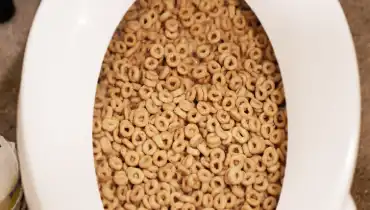In this article on the next paragraphs you'll find a bunch of sensible additional info when it comes to Flushing Food Down the Toilet?.

Introduction
Many individuals are typically confronted with the predicament of what to do with food waste, especially when it pertains to leftovers or scraps. One usual concern that emerges is whether it's fine to flush food down the toilet. In this write-up, we'll delve into the reasons individuals could think about purging food, the consequences of doing so, and different methods for correct disposal.
Reasons that people might take into consideration flushing food
Lack of understanding
Some individuals might not recognize the possible harm triggered by flushing food down the bathroom. They might wrongly believe that it's a safe practice.
Ease
Flushing food down the toilet may feel like a fast and very easy remedy to throwing away unwanted scraps, particularly when there's no close-by garbage can readily available.
Idleness
Sometimes, individuals might simply select to flush food out of large laziness, without thinking about the consequences of their actions.
Consequences of flushing food down the commode
Ecological impact
Food waste that ends up in rivers can add to contamination and harm aquatic ecosystems. Additionally, the water used to purge food can strain water resources.
Pipes issues
Flushing food can result in clogged up pipes and drains, creating expensive pipes fixings and inconveniences.
Kinds of food that ought to not be flushed
Coarse foods
Foods with fibrous appearances such as celery or corn husks can get tangled in pipes and cause blockages.
Starchy foods
Starchy foods like pasta and rice can soak up water and swell, resulting in obstructions in pipelines.
Oils and fats
Greasy foods like bacon or food preparation oils should never ever be purged down the bathroom as they can solidify and trigger clogs.
Correct disposal techniques for food waste
Making use of a garbage disposal
For homes equipped with waste disposal unit, food scraps can be ground up and flushed through the pipes system. Nonetheless, not all foods are suitable for disposal in this manner.
Recycling
Particular food product packaging materials can be recycled, lowering waste and minimizing ecological influence.
Composting
Composting is an eco-friendly method to dispose of food waste. Organic products can be composted and used to improve soil for gardening.
The significance of appropriate waste administration
Reducing environmental injury
Correct waste management methods, such as composting and recycling, assistance reduce air pollution and maintain natural deposits for future generations.
Securing plumbing systems
By staying clear of the technique of flushing food down the commode, home owners can stop costly plumbing repair work and maintain the honesty of their plumbing systems.
Conclusion
To conclude, while it might be appealing to flush food down the bathroom for convenience, it is necessary to comprehend the prospective repercussions of this activity. By embracing appropriate waste management techniques and taking care of food waste responsibly, individuals can add to healthier pipes systems and a cleaner atmosphere for all.
FLUSH FOOD DOWN THE TOILET?
FLUSHING FOOD CAN CAUSE BLOCKED DRAINS IN YOUR HOME
All of the plumbing fixtures in your home are connected to the same sewer pipe outside of your home. This outdoor sewer pipe is responsible for transporting all the wastewater from your home to the Council sewer mains. Even small pieces of food that go down the kitchen sink can cause problems for your sewer. It should therefore be obvious that flushing larger bits of food, such as meat, risks a clog in either the toilet itself or the sewer pipes. Flushing greasy food is even more problematic because oil coagulates when it cools, coating the interior lining of your pipes.
THE TOILET IS NOT A BIN
Food isn’t the only thing that people shouldn’t be flushing down the toilet. People use the toilet to dispose of all kinds of things such as tampons, makeup wipes, dental floss, kitty litter and even underwear. Water goes to great lengths to educate residents about the high costs and stress placed on wastewater treatment systems simply from people flushing the wrong stuff down the toilet. It costs taxpayers millions of dollars each year, and homeowners thousands in blocked drain repairs.
FLUSHING FOOD IS A WASTE OF WATER
Flushing food is a waste of our most precious resource - water. In June this year Level 1 water restrictions were introduced to protect water supply from drought conditions. Much of New South Wales continues to be affected by prolonged drought with recent figures revealing up to 97 per cent of the state remains in drought. Depending on whether you have a single or dual flush toilet, every single flush uses between five and 11 litres of water. In the current climate this is a huge amount of water to be wasting on flushing food that should be placed in the bin (or better yet, the compost).
https://www.jabplumbingsolutions.com.au/blog/can-you-flush-food-down-the-toilet

Hopefully you enjoyed our article about Think Twice Before Flushing Food Down Your Toilet. Many thanks for finding the time to browse our post. Enjoyed reading our posting? Please quickly share it. Let others discover it. Thanks a lot for going through it.
Top Article